THINNED TREES AREN’T SKINNY
Avoid Extremes
A week or so ago, fruit trees were so full of blossoms that they looked like giant snowballs, foreshadowing a heavy crop of fruit later this season. Too heavy, perhaps, for the branches to support. Too heavy, perhaps, for fruits that are large and luscious. Surely so heavy that next year’s harvest could be paltry.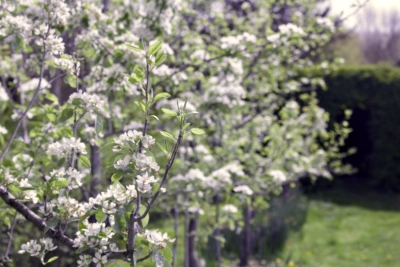
Some fruit trees are more prone than others to getting into a feast and famine cycle of a heavy crop one year and a light crop the next. My Macoun apple tree, although it bears delectable fruits, is the worst in this regard among the few apple varieties that I grow. Fruit in the “on” year tend to be small, poorly colored, and of low quality; the few fruit in the “off’ year are usually too large, also poor quality, and may result in physiological disorders such as fruit cracking or the dark, corky lesions of bitter pit.
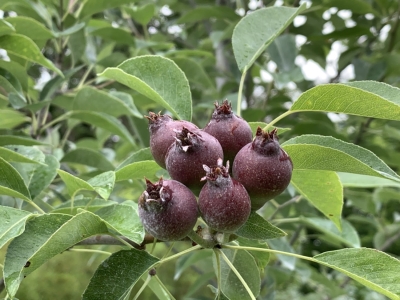
Pear fruitlets from just one flower
We can blame biennial bearing on a hormone (gibberellic acid) produced in fruit seeds. This hormone suppresses the beginnings of flower buds, which for fruit trees occurs this year for next year’s flowers. So a heavy crop — and, hence, a lot of seeds — this year quells flower bud initiation this year and flowering and fruiting next year. In a year with few fruits, hormone levels stay low so that many flower buds are initiated and in the next year trees are riots of blooms. And so the feast and famine cycle continues.
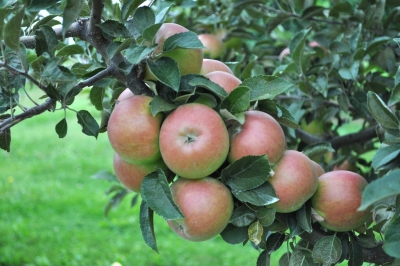
Too many fruits
How to Thin
No need to twiddle our thumbs and accept biennial bearing as the nature of fruit trees. This tendency can be reined in. The way to thwart it should now be obvious: Reduce the number of fruits in a tree’s “feast” year. Pruning is one way to do this, by reducing the number of flowers before they even open. Usually, fruit trees are pruned in winter, before the buds begin growing in spring, but you could still prune now.
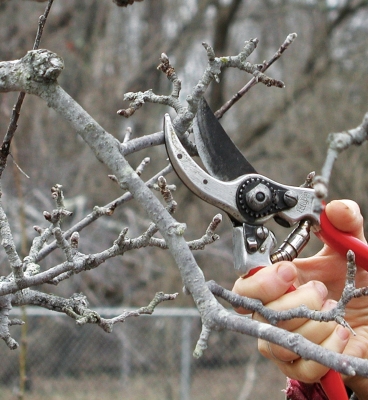
Winter pruning of apple fruit spur
Pruning is more far-reaching in its effects than just on biennial bearing, and each kind of fruit tree has its own pruning needs. (If I may interject a personal plug here: pruning of all kinds of fruits is covered in my book, THE PRUNING BOOK.) Still, as you prune to open a tree up to light and air, and to control its size, you are indeed removing potential fruits and seeds. In addition, shortening branches puts remaining fruits closer to the trunk where, with less leverage, they are less likely to break a limb.
But pruning alone generally isn’t enough to get a fruit tree out of a bad habit. Now is the time to start looking over your trees and “thinning,” that is, removing excess, fruitlets. Focus your energy on larger fruits, such as apples, pears, and peaches, because thinning would be too tedious — and fortunately, has little effect — on small fruits such as cherries and small plums.
The sooner you begin thinning, the greater the benefit next year, especially with apple trees. I use my thumbnail or a pointy pair of flower shears.  If you have a lot of trees, you might opt for more brute force methods such as strong blasts of water from a hose nozzle or batting the flower laden branches with a piece of hose slid over the end of a broomstick. Farmers thin their fruits with chemical sprays.
If you have a lot of trees, you might opt for more brute force methods such as strong blasts of water from a hose nozzle or batting the flower laden branches with a piece of hose slid over the end of a broomstick. Farmers thin their fruits with chemical sprays.
Don’t Rush It
No need to complete all the fruit thinning right away. In fact, there’s good reason to leave enough fruitlets around for another thinning session in a few weeks, after “June drop” occurs. June drop is a fruit tree’s own realization that, after carrying extra fruitlets to get it through spring frosts and other early season calamities, it can shed excess. But not enough to suit our tastebuds.
Complete your fruit thinning right after June drop, as your tree gives that sigh of relief that dangers have past. That is the time to put a few inches of space between each developing fruit, always selectively saving those that are largest and most free of blemishes. Don’t be afraid to thin; with apples and pears, only five percent of the blossoms needs to swell into ripe fruits for a full crop.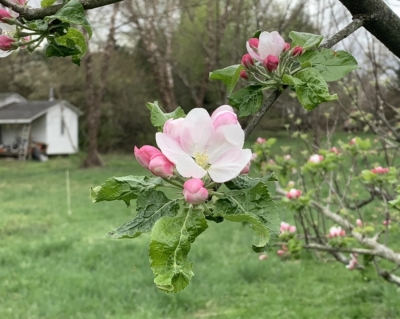
Fruit thinning has benefits beyond just thwarting the tendency towards biennial bearing. It reduces pests, such as codling moth — the “worm” in an apple — because Ms. Codling likes best to lay eggs in apples that are touching each other.
Thinning also lets the tree pump more energy, which translates into bigger size and better flavor, into those fruits that remain. With apples and pears, I strive for about five inches between fruits along a branch.
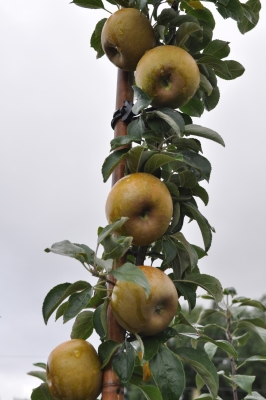
Well-thinned Golden Russet apples
Asian pears tend to bear very heavily (and precociously). I thin my Asian pear trees multiple times throughout the growing season, one reason being that a few weeks after each thinning, I look again and there’s often still too many. Without thinning, the fruit flavor is mostly watery. With thinning, the flavor is sweet and floral.
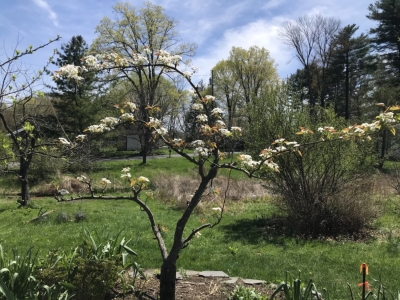
Asian pear in bloom


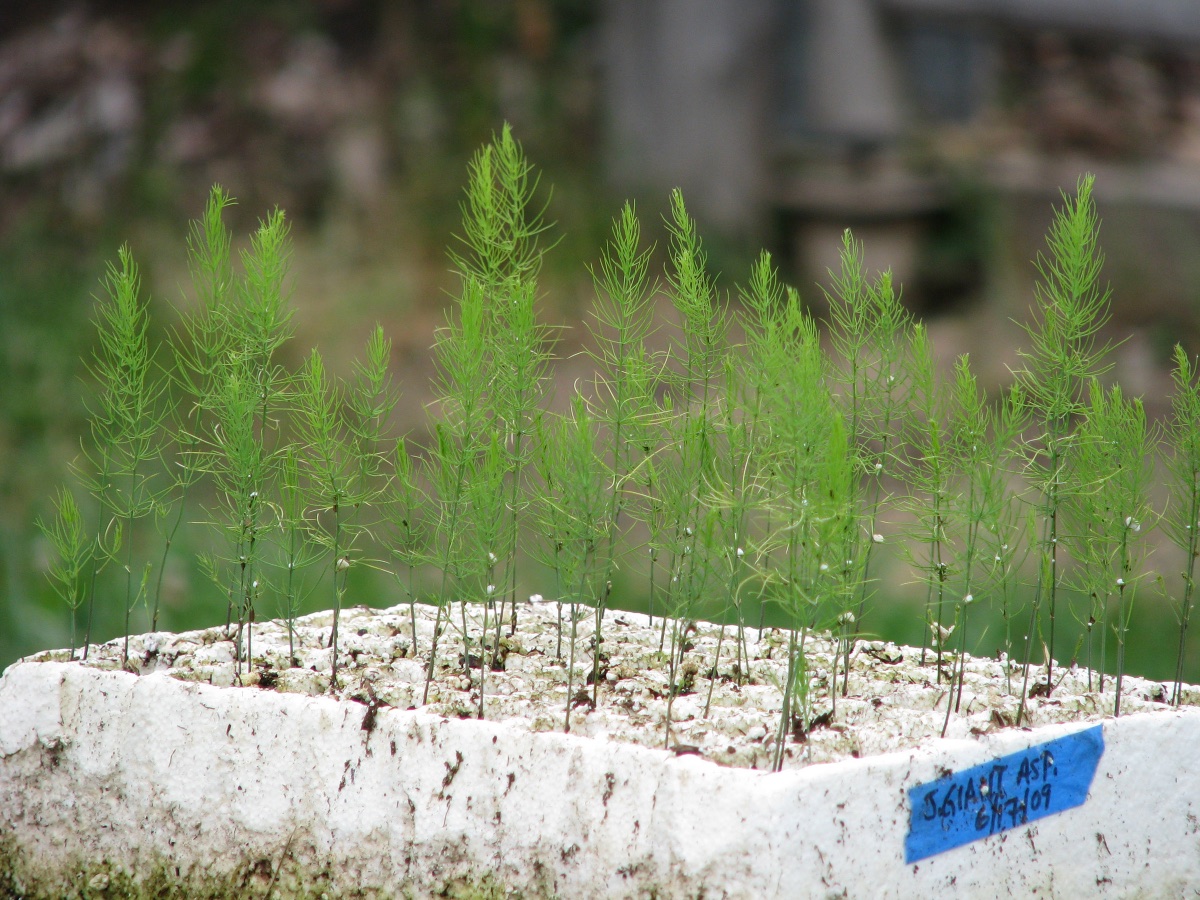
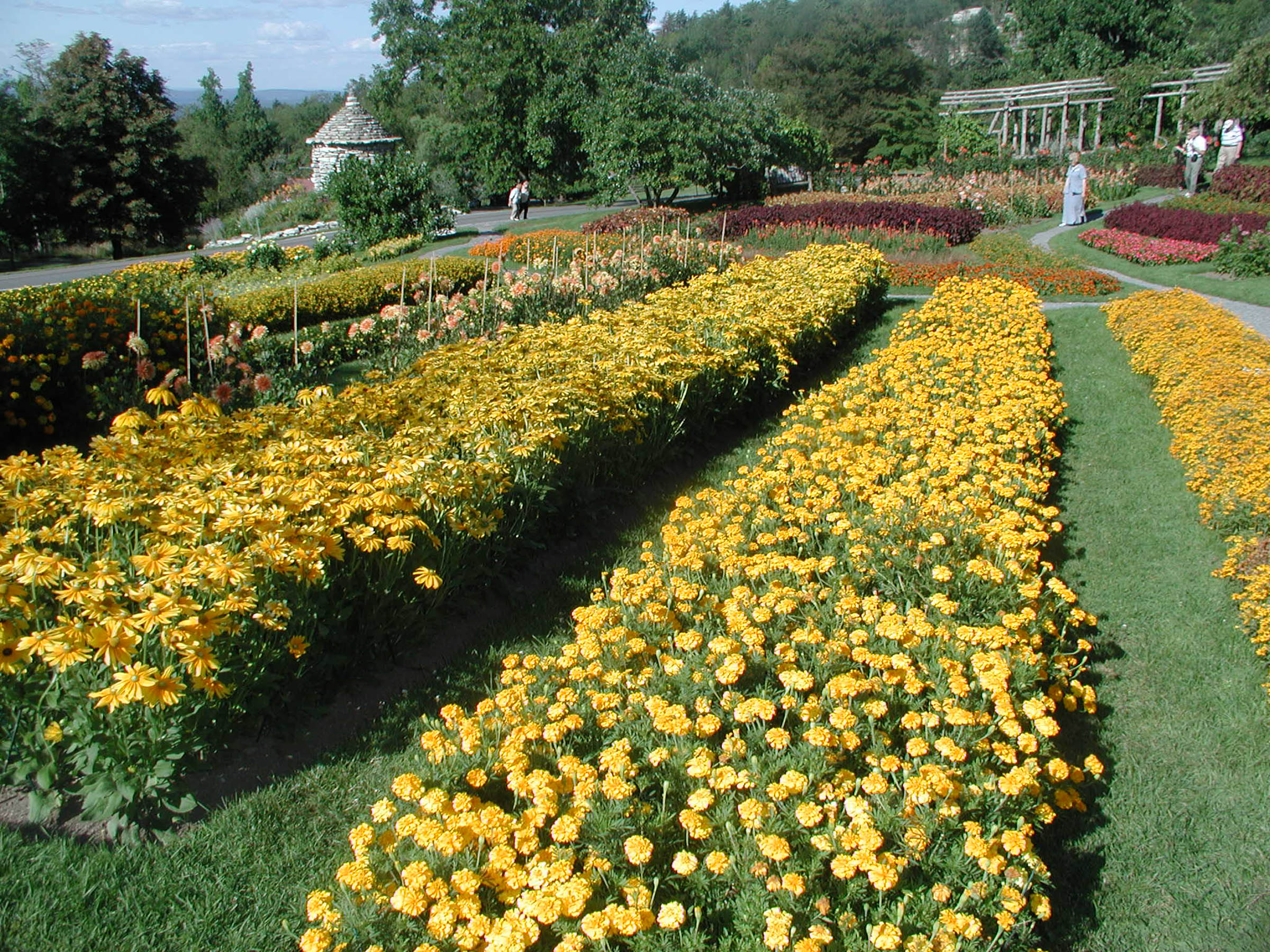
You mention small plums aren’t necessary to thin, but do you mean that there are some plums that are larger and would benefit from thinning?
My pluots went bonkers this year, and I’m sure if I didn’t thin the branches would break!
What say you on persimmon thinning?
The larger plums, such as the Prunus salicina varieties, benefit from thinning. In my experience, American persimmons don’t need thinning. Not sure about Asian varieties, which are larger.
Hi, Lee,
thank you for this info. Two follow up questions: I have not thinned my apricots—- one yr I got a hundred from one tree—- since then, the squirrels have feasted, we have not. I’ve tried various things— but esp bec I espaliered them, they’ve been happily available to the squirrels. I’ve tried to cover them—only seems to have annoyed the squirrels. It may be my place to be feeding them. Open for suggestions.
My pears, one, seckel which I love, is too tall for me to reach. I meant to have them trimmed, by now I think it may be too late. ?Would you still trim or wait till after summer? Many thanks!
Squirrels are a serious pest with fruits (and hazelnuts, which I also grow). I suggest dogs, cats, guns, and traps. If your trees are trained with the lowest branches high enough and neighboring trees are sufficiently distant, you could make a squirrel guard out of sheet metal — either an upside down cone or a cylindrical length along the trunk. Good luck. Tree-ripened apricots are heavenly.
Now would be a good time to trim the pear tree.